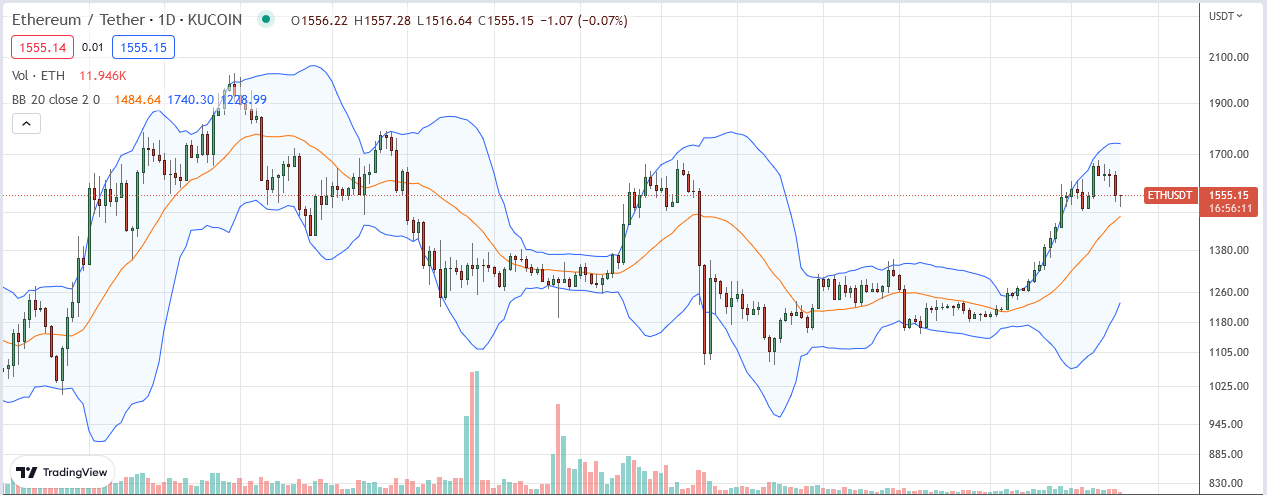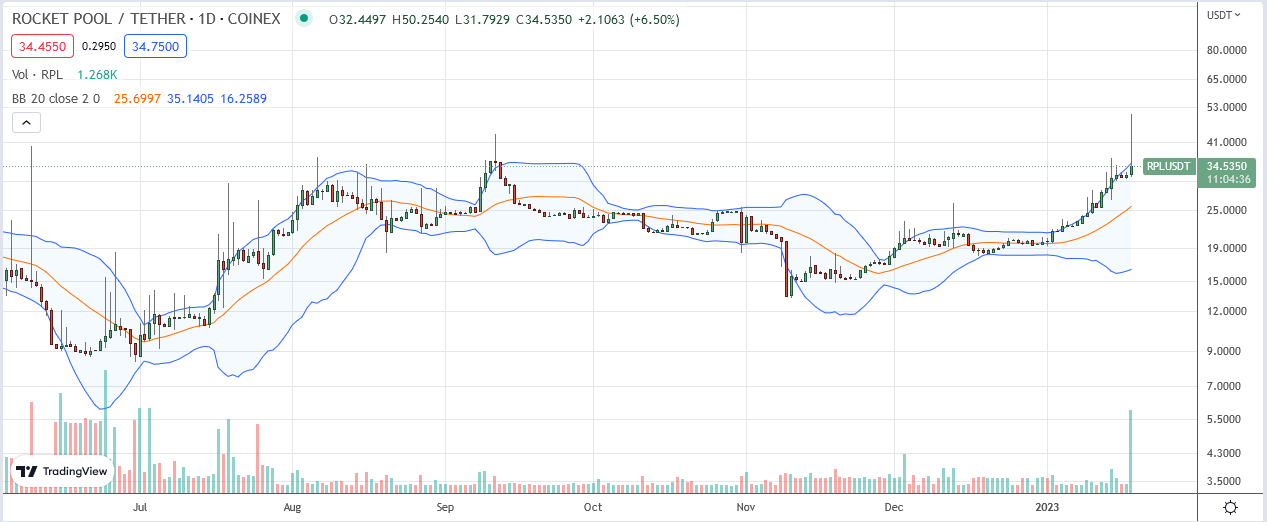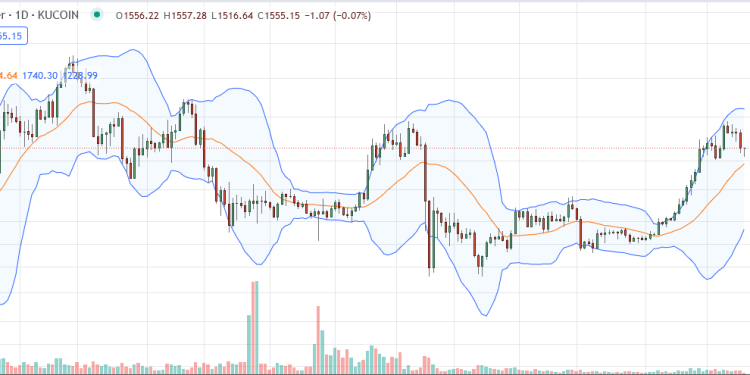Ethereum’s Shanghai upgrade will unlock ether that has been staked since the Merge, potentially leading to selling pressure that market participants could ride out or take advantage of.
Ethereum’s Shanghai Is Nearing, but When Can I Withdraw My Staked ETH?
Even though the Ethereum blockchain’s Shanghai hard fork (also known as Shapella) will go live April 12, you might not receive your rewards immediately if you have staked ETH with a staking service or a staking pool.
Ethereum’s Shanghai Hard Fork Now Has an Official Target Date
Ethereum developers discussed April 12 for the long-awaited upgrade that will enable staked ETH withdrawals. Once the date is confirmed by developers on GitHub, Shanghai will be set in stone.
Staked ETH Withdrawals Being Processed on Ethereum Goerli Testnet Ahead of Shanghai Fork
Ethereum developers still need to set a date for the Shanghai hard fork to go live on the mainnet blockchain.
Ether Call Options Look Attractive Relative to Bitcoin as Volatility Spread Dwindles
Crypto services provider Matrixport suggests collecting premium by selling bitcoin call options and using the same to fund the purchase of ether calls.
Ethereum’s Shanghai Upgrade Will Not Crash Ether Price, Analysts Say
Many investors fear that ETH’s price may tumble as the Shanghai upgrade will allow withdrawals for some $29 billion of previously locked ETH. Crypto analysts CoinDesk interviewed are saying that concerns are overblown and the selling pressure will be limited.
Shanghai + Capella = ‘Shapella’: How Ethereum Devs Now Refer to Upcoming Upgrade
While technically the Shanghai Upgrade is only on the execution side, Capella is the simultaneous upgrade happening on the consensus side. Hence the merging of the two names to “Shapella”.
Ether Supply Impact From the Shanghai Upgrade Is Limited: Bernstein
Price action will be “cautious” into the upgrade as the market is worried about a potential supply overhang, the report said.
Upcoming Upgrades That Will Shape the Ethereum Ecosystem
Here are some approaching dates and launches that Ethereum followers and observers should keep an eye on.
Second Ethereum Testnet Successfully Simulates Shanghai Hard Fork
The Sepolia testnet was able to successfully process staked ETH withdrawals. There is one more test on the Goerli testnet that is planned before Shanghai goes live.
What the Ethereum Shanghai Upgrade Will Mean for ETH Liquidity
A significant change to Ethereum’s proof-of-stake system is slated for March, which will likely incentivize a wave of building and consumer choice in the “liquid staking” sector.
Coinbase: Ether Selling Pressure Should Be Fairly Limited Around the Shanghai Fork Upgrade
The amount of potential selling pressure around Ethereum’s planned upgrade has been complicated by Kraken’s decision to wind down its U.S. staking business, the report said.
Sell or stake: Ethereum staking giant Lido mulls choices for its $30M ETH

While LidoDAO’s current inflows of about 1000 stETH are sufficient to cover operating costs for the time being, it’s worried that may not last.
Number Of New Ethereum Validators Remains Flat Ahead Of Shanghai Upgrade
There is no marked shift in the number of new addresses depositing the required 32 ETH, the minimum amount required to be deposited into the Beacon Chain for holders who wish to operate a validator node, into the official Beacon Chain Deposit Address ahead of the Shanghai Upgrade on Ethereum.
The Shanghai Upgrade is scheduled for March 2023 and this hard fork will allow stakers to unlock ETH locked in the Beacon Chain.
Number of New ETH Depositors Falling
Apart from the spike in new deposits in the second quarter of 2021, the number of new accounts depositing 32 ETH is declining. The figure remains flat throughout the second half of 2021, the better part of 2022, and January 2023.
Data from Cryptoquant shows that 49 new accounts deposited 32 ETH into the Beacon Chain on January 23, down from 210 recorded less than 10 days earlier on January 13. This is nothing compared to the 2,158 new depositors recorded on May 27, 2021.
Ethereum shifted from a proof of work system to a staking system in 2022 via the Merge. During the Merge, the proof-of-work algorithm was officially switched off as the network transited to a staking system, replacing miners with validators.
Validators are required to stake at least 32 ETH. This amount is needed to ensure that they comply with the network’s rules. Validators are tasked with confirming on-chain transactions and securing the network.
The stake amount is “slashed” whenever they try acting maliciously, or their performance drops, falling lower than the network stipulates. In extreme cases, other Ethereum validators can “slash” the offending validator, wiping out their entire stake.
Proof-of-Stake In Ethereum Fosters Decentralization
The growth in the number of unique accounts, mostly validators depositing over 32 ETH, has been linear since late 2020. To illustrate, the number of unique depositors rose from 77 on November 4, 2020, to 82,634 on January 24, 2023. This steady growth is a positive for Ethereum as a network. It could be an indicator of the positive response from the community.
By eliminating miners for validators, the playing field is leveled for everyone, including those who couldn’t afford to buy mining gear or actively keep track of graphic card prices. Ethereum validators are required to ensure their nodes operate with high reliability and 100% up-time. This is in place of operating mining rigs which were energy intensive, scarce, and generally expensive.
As of January 25, over $25.2 billion worth of ETH was officially locked in the official Beacon Chain Deposit Address. The dollar value, however, fluctuates depending on the ETH spot rates.

After peaking in late November 2021, ETH prices have more than halved to spot rates at $1,556 on January 2023 at the time of writing. On June 18, 2022, ETH prices fell to a cycle low of $880.
Rocket Pool (RPL) Surged 55% after Listing on Binance
Trackers on January 18 show that the native token of Rocket Pool, RPL, rallied 55% and is among one of the top performers in the top 100 coins by market capitalization.
Rocket Pool is Rallying after Binance Listing
The surge coincides with RPL’s listing on Binance, the world’s largest cryptocurrency exchange by trading volume. The token is paired against USDT, the stablecoin issued by Tether Holdings, which is also the most liquid in crypto circles, and BUSD.
However, the surge registered earlier today has since been reversed. Data showed that the project’s market cap is $675.1 million, and RPL is up 9% versus the USDT. At the same time, it outperforms bitcoin (BTC) and ethereum (ETH), adding roughly 10% versus the top most liquid cryptocurrencies.

Listing on Binance opens the token to more liquidity, allowing traders and investors who might not be familiar with the intricacies of DeFi trading to purchase the token. Before being availed on Binance, RPL was available for trading in most decentralized exchanges, including Uniswap, Bancor, and Balancer. However, RPL had been listed in exchanges within the United States, including Huobi, Coinbase, Kraken, and MEXC Global.
Hard work of the @Rocket_Pool team paying off with a @binance listing today. A project we have remained bullish on for many years with $RPL up 100x since first covering. The next market cycle is now about decentralising all layers of the $ETH stack.
— Alex Saunders
(@AlexSaundersAU) January 18, 2023
By springing to spot levels and clearing immediate liquidation zones, printing new monthly highs, it can be interpreted that the community received the listing positively, expecting more developments in the next few months. This can be especially the case considering the market’s state and Rocket Pool’s role in Ethereum.
After the slumps of 2022, RPL, like most crypto and DeFi tokens, fell from record highs. As an illustration, RPL tanked 76% from April highs, bottoming up in mid-June before rallying to spot levels. Despite the blips of early November, triggered by market-wide fears of FTX and Alameda’s collapse, RPL is back to April’s territory.
Improving Macroeconomic Factors and Shanghai Upgrade
The sharp reversal and change in fortunes for RPL can be attributed to various fundamental factors. At the top of the list, possibly explaining the rise across the financial markets is shifting macroeconomic factors.
Statistics indicate that inflation is falling from multi-year highs, influencing central banks’ decisions on implementing their monetary policies. The confidence amongst investors and traders spilled over the crypto, helping pump BTC and altcoins, including RPL.
Rocket Pool has more tailwinds because of the upcoming Shanghai Upgrade in Ethereum and what the protocol inherently solves. Rocket Pool allows ETH holders to stake, slashing capital and hardware requirements, which can be otherwise prohibitive.
ETH holders can stake as low as 0.01ETH to a node operator and earn annual rewards. In Rocket Pool, a node operator must hold 16 ETH. Once Ethereum permits users who had locked their coins in the Beacon Chain to withdraw, some may delegate coins via Rocket Pool. This expectation supports RPL and other staking service providers, including Lido DAO.
As NewsBTC reported, Lido DAO’s native token, LDO, has been rising in recent weeks, spearheading the broader market recovery.
Vitalik Buterin highlights what he’s bullish about for 2023

The Ethereum co-founder expects to reach a new milestone for rollups this year.
















